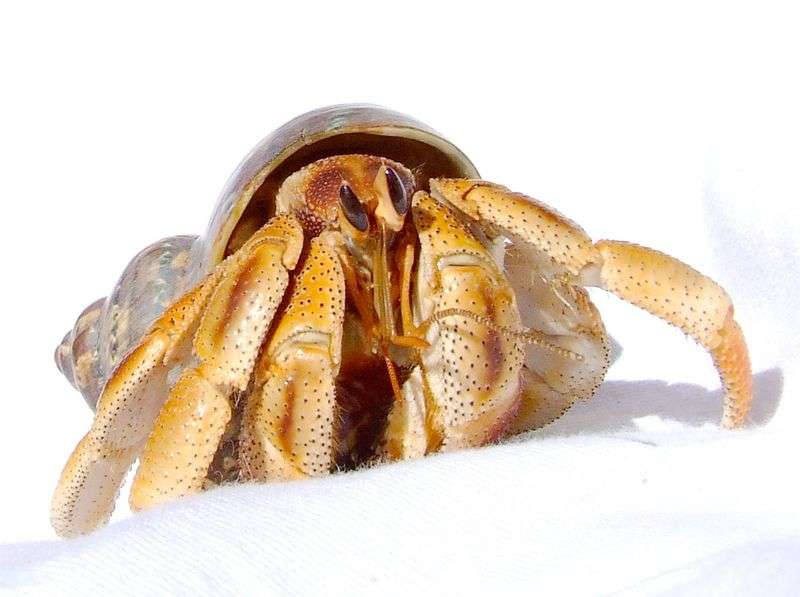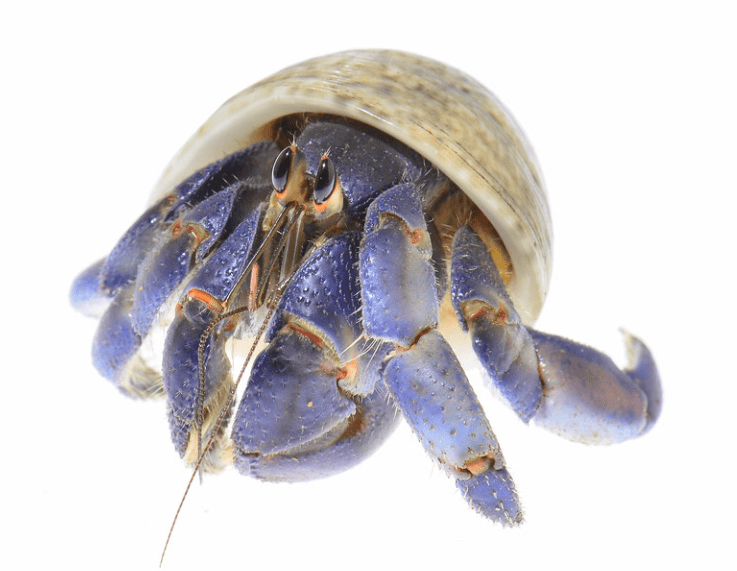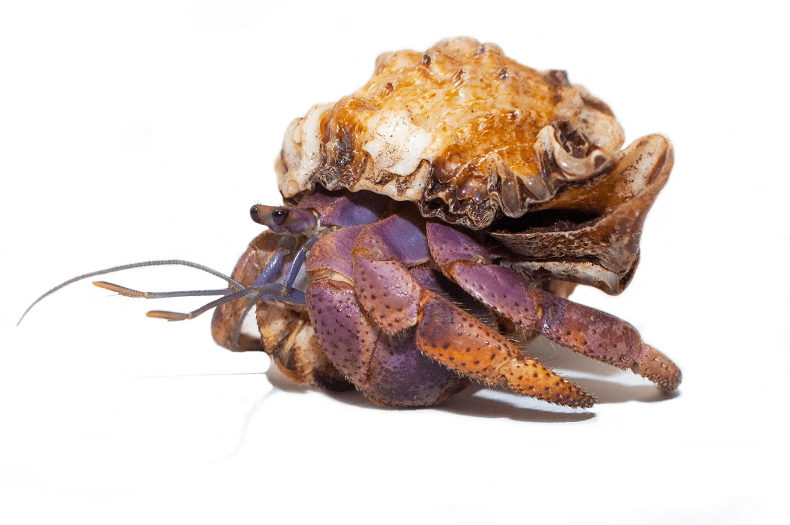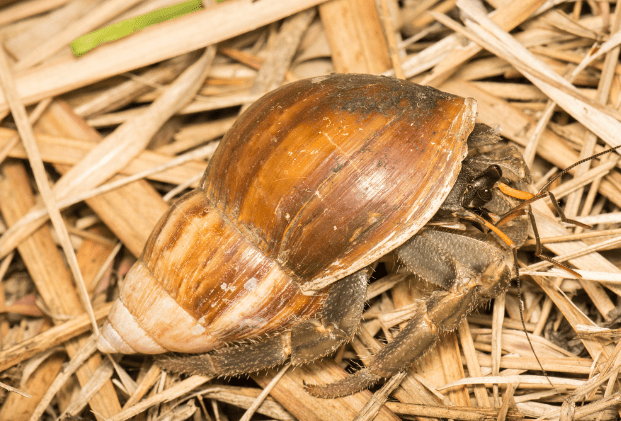
Australian Hermit Crab
Description
Australia is home to the terrestrial hermit crab species known as the Australian land hermit crab (Coenobita variabilis). Small terrestrial hermit crabs belong to the genus Coenobita, and one of the smallest species is Coenobita variabilis.
Coenobita variabilis, like other hermit crab species, lacks a full exoskeleton and must rely on snail shells to protect its delicate abdomen. The chelae of these crabs are used to seal the shell’s aperture, acting as a cover to protect the delicate bodies inside.
Its exoskeleton is typically beige, cream, reddish brown, or pale brown with occasionally deeper (brown) markings. The exoskeleton’s front portion is white. The exoskeleton’s colour is frequently not uniform throughout. Although whiter, the juvenile version resembles the adult type. The head is shaped like a “M” in brown. The exoskeleton is covered in black granules. The eyes are long and the exoskeleton’s colour matches them. The second and third pairs of legs, as well as the left claw, are more developed and have stripes. Beige antennas are used. The abdomen is short and voluminous.
Distribution
The Coenobita variabilis species is native to Australia, and it only has a small geographic distribution that includes the coasts of the Northern Territory and the northwest corner of Western Australia.
Behavior
The Coenobita variabilis is most active at night and typically gets going right before dusk. They may, however, frequently continue to be active throughout the day if they are in humid, forested environments or in captivity.
Because they are sociable creatures, these crabs live in enormous colonies where they communicate and trade shells. Although you might witness children shoving and climbing on each other, the majority of the time there is no harm done. In the world of hermit crabs, establishing dominance and a pecking order is a rather common behavior.
Australian crabs are renowned for their high levels of activity. These hermit crabs are renowned for being nimble and would frequently flee when being pursued, perhaps even leaving their shells behind.

Keeping as Pet
Tank Size (Enclosure):
These hermit crabs, despite their diminutive size, are extremely active creatures who need lots of room to move around. For one adult Coenobita variabilis, a minimum tank size of 10 gallons (40 litres) is advised, while two crabs will need at least 20 gallons (80 litres), if not more.
Water:
These hermit crabs have evolved to survive at the coast. As a result, to keep their gills moist in captivity, they need regular access to seawater. They can’t live without access to both fresh and salt water.
The presence of both freshwater and saltwater in the crabitat is essential for fostering a favourable environment for this species.
Diet
20% of the meal should be a diet based on meat, and 80% should be veggies. Coenobita variabilis will eat a variety of foods while kept in captivity, including maize, carrots (which provide the carotenoid needed to maintain their colour), leafy vegetables, oak leaves, spinach, tree bark bananas, , nuts and seeds, cranberries, sweet potatoes, broccoli, pumpkin, red peppers, squash and dead snails, crickets, (and other insects).
Temperature:
The enclosure’s temperature needs to be maintained between 78 and 90 degrees Fahrenheit (26 and 32 degrees Celsius) to protect the health of Coenobita variabilis. They enjoy warm weather.
Hermit crabs may become sluggish and slow at low temperatures, and if the temperature is low for an extended period of time, they may burrow or even go into a semi-hibernation state.
Humidity:
Hermit crabs need humid air to breathe correctly, with an ideal relative humidity range of 70 to 90%.
Table





